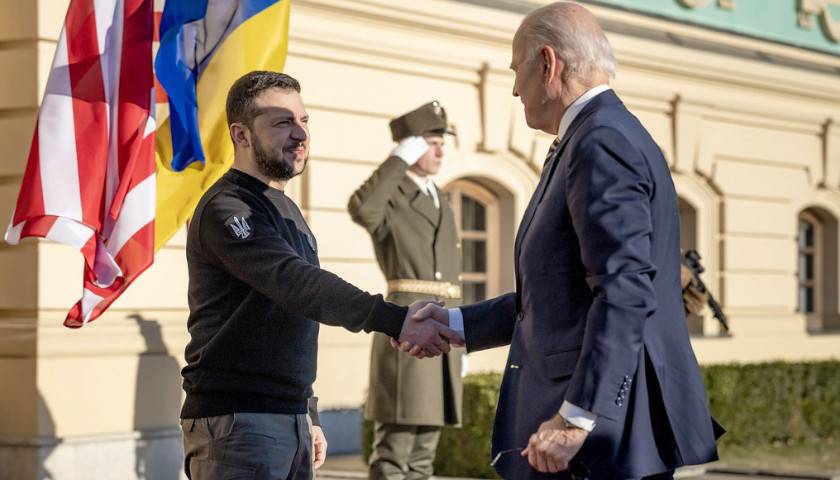by Micaela Burrow
The Biden administration is seeking to hammer out a long-term Ukraine aid agreement with European allies in hopes of both preventing Russia from gaining an edge on the battlefield and hamstringing a future president’s ability to scale back U.S. commitments, The Wall Street Journal reported Tuesday.
The scheme emerged during sideline talks among Group of Seven leaders at a NATO summit in July, and so far involves negotiations between the U.S. and Ukraine, and between the United Kingdom (U.K.) and Ukraine, according to the WSJ. It’s an attempt, in part, to convince Russian President Vladimir Putin he can simply wait until a new American administration, as several top GOP political contenders have expressed intention to reduce or eliminate U.S. aid that makes up the brunt of Western support.
Building up Kyiv’s defense forces in the long term can theoretically deter Russia from invading again, officials calculated, according to the WSJ.
 Former president Donald Trump has maintained a lead in Republican primary candidate polling and could face a second showdown with President Joe Biden in the 2024 election. Trump has claimed he could solve the war “within 24 hours.”
Former president Donald Trump has maintained a lead in Republican primary candidate polling and could face a second showdown with President Joe Biden in the 2024 election. Trump has claimed he could solve the war “within 24 hours.”
At the first Republican primary debate Wednesday, several candidates indicated they would support drawing down aid for Ukraine.
Eighteen countries not belonging to the G-7 wealthy democracies, including the Netherlands and Sweden, have also agreed to the long-term security assistance pledge for Ukraine, according to the WSJ.
European capitals want to cement support and restrict ways countries could renege on pledges, fearing what might happen during a second Trump administration, according to the WSJ. At present, Western European nations lack the industrial and financial capacity to match the billions in annual military aid provided by the U.S.
Since Russia launched a full-scale invasion of Ukraine in February 2022, the U.S. has devoted more than $40 billion worth of weapons and equipment, as well as training and investment into U.S. weapons companies, for the purpose of aiding Ukraine’s resistance. The aid has exposed weaknesses in American military readiness and industrial base capacity, provoking criticism the U.S. should be using those funds to shore up defenses with an eye toward China as the war in Ukraine drags on with no end in sight.
However, the practical workings of the agreement pose significant hurdles to the Biden administration’s goals, the WSJ reported, citing officials. A sitting president has limited ability to bind his successor to any initiative or policy.
NATO stands with you today, tomorrow and for as long as it takes#UkraineIndependenceDay#StandWithUkraine 🇺🇦 pic.twitter.com/4sklV2WdSe
— NATO (@NATO) August 24, 2023
The State Department led the first U.S. meeting on the initiative on Aug. 3, involving Ukrainian officials and representatives from the White House and the Pentagon, according to the WSJ. U.S. officials hope to convene a second meeting soon.
France expects to begin negotiations in the coming weeks, a senior French official told the WSJ.
“Our bilateral security commitments will focus on ensuring Ukraine has a sustainable force capable of defending Ukraine now and deterring Russian aggression in the future,” the State Department told the WSJ.
So far, no party has yet decided what the agreement will actually look like, according to the WSJ.
– – –
Micaela Burrow is a reporter at Daily Caller News Foundation.




